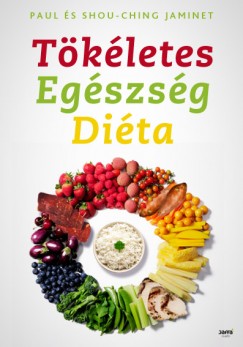I have a number of blog posts in progress but before finishing those I want to put up a few items.
First, I recorded a new podcast with Jon Smith of The Fit Fat Fast Podcast, which is devoted to endurance athletes but covers a wide range of topics. Check it out!
Second, Shou-Ching and I will be speaking in Seoul, Korea, on Saturday June 29 at CrossFit Sentinel. We’re excited to be visiting Korea again, it’s been quite some time, and we’re very happy to begin spreading our diet into Asia.
Third, I want to thank everyone who leaves Amazon reviews and reader results stories. Let me share a few that we especially enjoyed.
At Amazon, Matt Marcheski wrote:
If this is the bible Paul and Shou-Ching Jaminet are gods…. I have absolutely no problem stating that this is the best book written on nutrition that I’ve come across.
I think Paul Jaminet intended this book to be simply stated, non-exaggerated book with TONS of properly cited information. He hit the nail on the head. However, my new found energy does not allow me to see this book in that light. It reads like an epic, feels like an enlightenment and tastes as delicious as our taste buds can handle. Our bodies are the result of millions of years of evolution. Is it possible that our sweet teeth, fatty preferences and insatiable hunger are screw ups? As Fall Out Boy and Elton John would say….. NO!
When I was reading this book I had already lost 60 pounds and doing GREAT, I simply read it for fun. I thought my diet was great, reading this book confirmed that statement, but I also found out that it could be MUCH better. I made small tweaks and followed their infamous supplement routine and WHOA. I lost an additional 20 pounds; BUT the diet definitely took ten years off my appearance. People used to think I was 25, now everyone says I look like I’m 16. THIS is no exaggeration, in fact I have been given a very difficult time buying alcohol because the picture on my ID looks nothing like me now. I HAVE NOT BOUGHT A DRINK WITHOUT GETTING CARDED YET. I got carded for redeeming a SCRATCH OFF ticket. I did not know that they were allowed to do that at the time. I’ve also had a MUCH better sense of well-being and A LOT more energy. You haven’t lived until you lived Perfectly.
I may be leading the review in the wrong direction though. DO NOT underestimate the amount of information in this book. What upset me about other books on diet & nutrition is that they consist of 95% gobbley-gook and 5% decent information. The Perfect Health diet is mostly 97% great information. If you are looking for motivation, go watch Dr. Phil, but quite frankly, no motivation is needed after reading this book. Your new hunger levels and taste buds provide all the motivation you need.
I have more respect for the Jaminets than any other people on Earth at this moment. They do not sell out, they provide ALL the information you need and if they do not have the answers to your questions they will find out. Take a look at their website. The community is actually OUTSTANDING as well, they are very well informed.
If you take into account all the chicks (or guys) your new appearance will be attracting, the years of perfect health you put on your life, your new sense of well-being and the money you will save on health care, this book could easily sell for $1,375,876.00 precisely.
Thanks, Matt! I’ll pass your pricing advice on to Scribner.
Francesca introduced us to a future astrophysicist, who has experienced many benefits but retains a puzzling itchy scalp:
The PHD has helped my whole family tremendously, but especially my sixteen year old granddaughter. She had frequent headaches and stomach aches since she was a toddler, at the age of seven a blood test showed that she was anaemic, had a TSH of 5.25mU/L, an FT3 level of 5.8mU/L and thyroid antibody levels consistent with auto-immune disease. She had no obvious signs of thyroid problems – she was always slim but had low self-esteem and struggled at school despite being an obviously intelligent child. At 14 the headaches became migraines and she was anxious and upset that she could never achieve the results needed to follow her dream of becoming an astro-physicist – she has had a passionate interest in astronomy from the age of about four.
We found the PHD almost two years ago and within a few days her headaches and stomach aches disappeared and her schoolwork improved tremendously. She said that before PHD she felt that her brain was in a fog and she couldn’t think properly. She is now achieving A’s in physics and chemistry and her dreams seem to be within reach….
She breaks the diet extremely rarely, not even for Christmas or birthdays, because even a bought smoothie caused a stomach ache and a headache. She loves Ris a la Mande and other recipes on your site.
Your diet has turned her life around and she is very grateful. Her only health problem is a terribly itchy scalp. She has had the problem for about two years and complains that it is now driving her insane. I developed the same problem at the same age and it drove me crazy for fifty years but since following PHD it has almost stopped itching. The itching followed exactly the same pattern for both of us – mainly in the crown area; perfectly healthy scalps; no dandruff; shiny healthy hair; we tried all possible hair products with no benefit yet washing with any hair product stops the itching for some hours….
My granddaughter has had almost miraculous improvements in her life from PHD so an itchy scalp doesn’t seem much of a problem but she is finding it very hard to cope with, especially when studying (which is most of her time) so we are hoping you can help.
Thank you for all your amazing work which has helped my family and so many others.
I suggested some nutritional steps, but I imagine it will take some experimentation and continued healing to figure this one out.
On the Reader Results page, Leo Delaplante left a great note (it was left while we were experimenting with Livefyre comments and I think this disturbed the formatting):
i want to thank paul and shou-ching for the for all their time spent researching ,compiling and publishing the perfecthealthdiet,,,you guys educated yourselves about nutrition with open minds and an unbiased view of all nutritional info available ,,,only then did you put all the pieces together and to write your book,,,your 5 year research to help yourselves with your health issues and then to unselfishly share it with us is truly and act of love and compassion to us all….i am sure that mainstream diet and health advisers are closet readers of your informative book,,,your down to earth intentions to help others is truly reflected in the ad free website you have and the amount of time and money you must be spending to answer questions and be guests on radio and conventions,,you are both the salt of the earth,,,,,,,,,,myself i picked up on your book last january and really felt i had found something different and complete to improve my eating habits and health,,,i raised four kids and did all the cooking myself rarely going out for fast foods,,i cooked in a 50′s 60′s style so meats vegies and potatoes were often used,,i wish i would of known more about nutrition but my 3 girls and boy all in their 20′s are all healthy and their weights are perfect….now that i know about seed oils,,grains,fructose ect. i have educated them all on your nutritional knowledge,,
since january 1st i have lost 25 pounds,,the first 10 came off within 2 weeks and now i am consistantly losing 1 lbs/week…i havent eaten wheat, sugar, grains (except for buckwheat and quinoa (buckwheat in my smoothies in the morning make me carb happy)) i understand why you reject any grains as a food but always hope that one day with more research you will let us know that quinoa, buckwheat, chia and hemp seeds are ok as this is were i cheat in my diet ,,,,i supplement ,intermiten fast,,,sleep 8 hrs a night(always have) and generally follow your guidelines 95% of the time,,,,i used to have heart burn(from wheat),,,,,,gone…………..take naps,,,,,,,,no more,,,,,,,,,snore like crazy…..now moderatly,,,,my last bloodwork showed my cholesterol numbers almost perfect(doctor took me off the statins) ,,blood sugar levels slightly below normal,,my doctors was amazed,,,,,,,after four months my new eating habits are a natural part of my life,,i have also spread this diet to my friends and family,,,,,,both of you are a rare find in this day and age and i want to thank you for what you have done to the health of all your followers,,,,,,,,,,,,,,,,,,,,leo delaplante
Bethany at MyFitnessPal left a great story:
I feel good. I’ve lost an unbelievable 10 pounds in 17 days (seriously, I keep getting back on the scale in disbelief), I’m sleeping like a baby, I have TONS of energy, I’m enjoying my food, and it’s only day 17. No, I don’t expect the weight loss to keep up at that rate, but I do expect that there’s something to this, considering my “perfect” diet from the past left me grumpy, hungry, malnourished, and overweight & gaining. It seemed impossible to me that I was gaining on my past regimen – every part of traditional diet science said I was doing the right thing, and many of my doctors confirmed it. Then I read this line written by Jaminet (from memory, may be slightly different in print):
“Nutrient hunger can cause weight loss to plateau and reverse, even if the diet does not change.”
Wow. That was it – the breaking point for me. My body wanted fat, and starches, and protein, and wanted to stop dealing with toxins. And now that it’s getting all the good fats my heart literally desires, I feel good. I feel happy.
And I have God to thank, and Paul Jaminet & his wife Shou-Ching, and everyone on MyFitnessPal that’s supportive and helpful – even if we do disagree on the details. 🙂
Bethany left an update this week.
There have also been many great stories over on the Perfect Health Diet Facebook group. I don’t want to cite people by name or quote too much because it’s a closed group, but I’ll just share this reminder that sometimes there is an adaptation period when you change diets:
I was relatively low-carb in 2012. On January 1, 2013, I went very low-carb and it immediately did not work. When I started PHD, I did puff up a bit–much to my distress. But I stuck with it because I felt so good. Two months in, I tweaked the starch down (maybe to 6 ounces a day) and started doing IF. I am now at the lowest weight of my adult life and feeling so strong. Many thanks to the Jaminets.
Thank you to all who leave personal stories and positive reviews!
Finally, an animal photo as we wish you a joyful weekend and, to our American readers, Memorial Day holiday:














Recent Comments